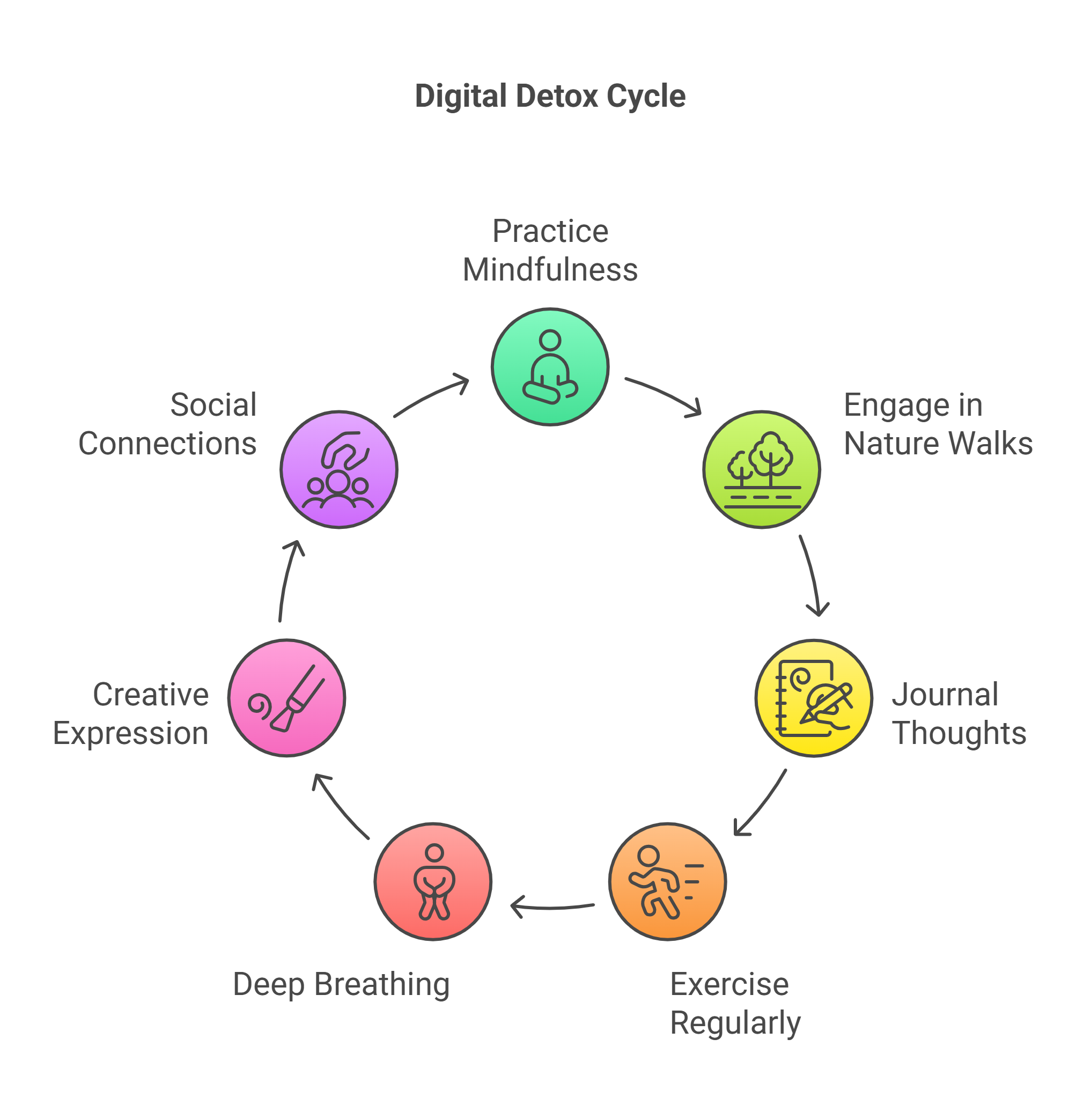
Digital Detox: 7 Science-Backed Ways to De-Stress Without Technology
In a world where the average American checks their phone 352 times daily (according to a 2023 study by RescueTime), finding moments of genuine disconnection has become both increasingly rare and desperately needed. That persistent notification ping isn't just an interruption—it's potentially a significant contributor to your stress levels.
The Digital Stress Epidemic
"The constant state of connectivity has created what I call 'technostress'—a modern condition where our brains never fully get the restorative downtime they evolutionarily require," explains Dr. Emma Richardson, neuropsychologist and author of Rewiring the Distracted Brain. "This perpetual digital vigilance triggers our body's stress response repeatedly throughout the day."
Research published in the Journal of Behavioral Addictions found that merely having your smartphone visible—even when powered off—can reduce available cognitive capacity and increase anxiety levels. That's right—your innocent-looking phone is basically a stress machine just sitting there.
So how do we break free from this digital stranglehold? Let's explore seven evidence-backed strategies that don't involve downloading yet another meditation app.
1. Establish Tech Boundaries (That You'll Actually Follow)
Create physical "no-phone zones" in your home—particularly your bedroom and dining area. According to sleep specialist Dr. Matthew Walker from UC Berkeley, "Using screens before bedtime is essentially telling your brain it's still daytime, disrupting your circadian rhythm and reducing sleep quality by up to 20%."
Pro tip: Instead of using your phone as an alarm clock (admit it, we've all done the "just checking the time" midnight scroll), invest in an actual alarm clock. Yes, they still make those!
2. Embrace "Boring" Activities
Remember when waiting for a friend at a café meant just... waiting? Not scrolling through endless content? Try intentionally practicing what psychologists call "beneficial boredom."
"Unstructured mental time allows your brain to make creative connections and process emotions," says Dr. Sandi Mann, author of The Science of Boredom. "These seemingly 'empty' moments are actually when some of our best thinking happens."
Next time you're waiting somewhere, resist the phone-grab reflex. Instead, people-watch, daydream, or simply breathe. It might feel uncomfortable at first—like an itch you can't scratch—but that's just your dopamine-dependent brain adjusting.
3. Get Your Hands Dirty (Literally)
A 2022 study in the International Journal of Environmental Research and Public Health found that gardening for just 30 minutes decreased cortisol levels (the stress hormone) significantly more than 30 minutes of scrolling social media.
Not blessed with outdoor space? No problem. Even tending to a few houseplants can create that nature connection. Bonus points if you repot plants while listening to birds chirping (yes, from an actual window, not a relaxation app).
4. Rediscover Physical Books
"When reading physical books, people show better comprehension and experience less eye strain and cognitive fatigue compared to screen reading," notes Dr. Anne Mangen from the University of Stavanger, whose research focuses on the differences between digital and print reading.
The physical act of turning pages also provides small, satisfying breaks that help information processing. Plus, nobody ever got distracted by a notification while reading a paperback—unless you count your cat sitting on the pages as a notification.

5. Try "Conspicuous Leisure" Activities
Remember hobbies? Those things people used to do before endless streaming and scrolling? Engaging in activities that require physical presence and mental focus—like knitting, woodworking, puzzles, or painting—activates what psychologists call "flow state."
Dr. Mihaly Csikszentmihalyi, who pioneered research on this concept, describes flow as "being completely involved in an activity for its own sake. The ego falls away. Time flies." Which sounds a lot more rewarding than realizing you've just spent two hours watching stranger's TikTok videos, doesn't it?
6. Schedule Device-Free Social Time
Research from Harvard's Human Connectedness project demonstrates that face-to-face interactions produce oxytocin (the bonding hormone) at levels that digital communications simply cannot match.
Try implementing a "phones in the basket" policy when friends gather. The first few minutes might feature some nervous phone-checking twitches, but you'll be surprised how quickly genuine conversation takes over. And no, talking about the latest viral videos doesn't count as genuine conversation.
7. Embrace Mindful Movement Without Trackers
"Exercise is one of our most powerful stress-reduction tools," explains sports psychologist Dr. Jonathan Fader. "But when we're constantly tracking, measuring, and sharing our activities, we rob ourselves of the mental health benefits by introducing performance anxiety."
Try leaving your fitness tracker at home and just moving your body for the sheer joy of it. Walk without counting steps. Run without logging miles. Dance in your living room like nobody's watching (because if you've followed tip #6, nobody's recording it for social media anyway).
The Bottom Line
Digital wellness isn't about abandoning technology completely—it's about establishing a healthier relationship with our devices. By creating intentional tech-free spaces and times in your life, you're not missing out—you're actually reclaiming something precious: your ability to be fully present.
Medical Disclaimer: This article provides general information for educational purposes only. It is not intended as medical advice. For health concerns related to stress or anxiety, please consult with qualified healthcare professionals.
 Add Row
Add Row  Add
Add 




 Add Row
Add Row  Add
Add 

Write A Comment